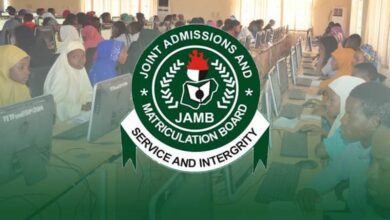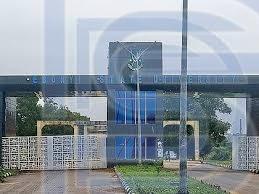PART 1
PART 2
1. What are the three distinct units of a functional unit of a computer system?
Answer: The input unit, central processing unit, and output unit.
2. Name four functions that a computer performs.
Answer:
- Takes data as input
- Stores data/information when use is required
- Processes data and converts it into useful information
- Outputs the information
3. What are the two basic components a computer system is generally made up of?
Answer: Hardware components and software components.
4. List five characteristics of a computer.
Answer: Diligence, speed, accuracy, storage, versatility.
5. List five advantages of using computers.
Answer:
- Computers are very fast.
- Computers are very accurate.
- Computers have much more storage capacity than human beings.
- A computer is free from monotony, tiredness, and lack of concentration.
- Computers can work continuously without creating any error and boredom.
6. What are the five computer generations?
Answer:
- First Generation: 1946–1959
- Second Generation: 1959–1965
- Third Generation: 1965–1971
- Fourth Generation: 1971–1980
- Fifth Generation: 1980-onwards
7. What are the three classifications of computers based on how a computer works?
Answer: Analogue, digital, and hybrid computers.
8. What are the two classifications of computers based on purpose?
Answer: Special-purpose and general-purpose computers.
9. What are the benefits of branded computers?
Answer:
- Systems engineered by vendor in its entirety
- Consistent performance and compatibility
- Certified by third-party vendors
- ISO compliance
- Bundled software and drivers
- Financial stability of vendor
- On-site service
10. What is data?
Answer: Data is a representation of facts, concepts, or instructions in a formalized manner suitable for communication, interpretation, or processing by humans or machines.
11. What is the difference between analogue and digital signals?
Answer: Analogue signal is a continuous waveform that changes over time, while a digital signal is a non-continuous, discrete-time signal.
12. What is the function of the backspace key on a keyboard?
Answer: It deletes the character before the current cursor position or the last character in a line.
13. What is the function of the control section within the Central Processing Unit (CPU)?
Answer: It directs the flow of operations, interprets program instructions, and coordinates other CPU parts. It does not process actual operations.
14. What role does the arithmetic-logic section play in a computer system?
Answer: It performs arithmetic operations (addition, subtraction, multiplication, division) and logic operations (comparison, conditions, etc.).
15. What are the four purposes of the internal storage section?
Answer:
- Retain data during processing
- Hold intermediate results
- Store processing results
- Store program instructions
16. What is the function of the output unit of a computer?
Answer: It receives processed data from the CPU and sends it to output devices like monitors, printers, or storage devices.
17. What is the Abacus?
Answer: A 5,000-year-old device used for computations using sliding beads on a rack.
18. What is the Difference Engine?
Answer: A mechanical calculator designed to compile and print mathematical tables and perform calculations.
19. What are the characteristics of first-generation computers?
Answer: Used vacuum tubes, were large, unreliable, slow, consumed much power, supported only machine language, and generated a lot of heat.
20. What are the characteristics of fifth-generation computers?
Answer: Use ULSI technology, have artificial intelligence, support natural language and parallel processing, are compact, fast, and affordable.
21. What is a special-purpose computer?
Answer: A computer designed for a specific task like traffic control, navigation, or robotics.
22. What is the difference between branded and cloned computers?
Answer: Branded computers are made by well-known companies with good support. Cloned computers are assembled from parts, cheaper, and customizable but may lack support.
23. What is information?
Answer: Organized or classified data that has meaning and is useful in making decisions or taking actions.
24. What is the function of the Windows key on a keyboard?
Answer: It opens the Start menu in Windows operating systems and was first introduced before Windows 95.
PART 3
Flashcards: Fundamentals of Computer Systems
- Question: Definition of a Computer System
Answer: An electronic data processing machine which accepts and stores input data (raw facts and figures), processes the data input, and outputs the processed data (information) in a required format. - Question: Functional Units of a Computer System
Answer: Input unit, central processing unit, and output unit. - Question: Input Unit
Answer: A computer must receive both data and program statements to function properly and be able to solve problems. Input devices accomplish feeding data and programs to a computer. - Question: Central Processing Unit (CPU)
Answer: The brain of a computer system that transfers data to one or various processing units. It consists of a control section, an arithmetic-logic section, and an internal storage section. - Question: Control Section
Answer: The control section directs the flow of traffic and maintains order within the computer. - Question: Arithmetic-Logic Section (ALU)
Answer: The arithmetic-logic section performs arithmetic operations, such as addition, subtraction, multiplication, and division. - Question: Internal Storage Section
Answer: The internal storage section serves for retention. - Question: Output Unit
Answer: As program statements and data are received by the CPU from an input device, the results of the processed data are sent from the CPU to an output device. - Question: Hardware Components
Answer: The general collection of all physical parts of a computer system. Computer hardware is what you can physically touch. - Question: Software Components
Answer: A software component is a collection of instructions that enable the user to interact with a computer, its hardware, or perform tasks. - Question: Advantages of using a computer
Answer:
○ A very fast machine
○ Very accurate
○ Has much more storage capacity than human beings
○ Free from monotony, tiredness, and lack of concentration
○ Can work continuously without creating any error and boredom
○ Very flexible in performing jobs
○ A versatile machine - Question: Disadvantages of using a computer
Answer:
○ Has no intelligence of its own
○ Cannot take any decision on its own
○ Cannot perform functions except as instructed
○ Has no feelings or emotions - Question: First-generation computers
Answer:
○ Time period: 1946–1959
○ Vacuum tube based - Question: Second-generation computers
Answer:
○ Time period: 1959–1965
○ Transistor based - Question: Third-generation computers
Answer:
○ Time period: 1965–1971
○ Integrated circuit based - Question: Fourth-generation computers
Answer:
○ Time period: 1971–1980
○ VLSI Microprocessor based - Question: Fifth-generation computers
Answer:
○ Time period: 1980–onwards
○ ULSI Microprocessor based - Question: Analogue Computer
Answer: A computer that uses the continuously changeable aspects of physical phenomena such as electrical, mechanical, or hydraulic quantities to model the problem being solved. - Question: Digital Computers
Answer: Digital computers use the binary arithmetic concept where numbers and letters are represented by combinations of zeros and ones (0 and 1). - Question: Hybrid Computers
Answer: Hybrid computers possess the attributes of both analogue and digital computers. - Question: Special-Purpose Computers
Answer: A special-purpose computer is designed for a specific application. - Question: General-Purpose Computers
Answer: General-purpose computers are used to handle a variety of tasks. - Question: Mainframe computers
Answer: Very huge computers with large memory and processing capabilities and can support hundreds of users simultaneously. - Question: Minicomputers
Answer: Medium-sized computers much larger than personal computers and support multiple users simultaneously. - Question: Microcomputers
Answer: Can support only one user at a time. - Question: Supercomputers
Answer: Supercomputers are the fastest type of computer and can execute programs very quickly. - Question: Benefits of Branded Computers
Answer: Systems engineered by vendor in its entirety, resulting in consistent performance and compatibility. - Question: Drawbacks of Branded Computers
Answer: Higher price. - Question: Benefits of Cloned/Assembled Computers
Answer: Lower price. - Question: Drawbacks of Cloned/Assembled Computers
Answer: Multi-vendor responsibility for part warranty. - Question: Data
Answer: Data can be defined as a representation of facts, concepts, or instructions in a formalized manner, suitable for communication, interpretation, or processing by human or electronic machine. - Question: Information
Answer: Information is organized or classified data so that it has some meaningful value to the receiver. - Question: Analogue Signal
Answer: An analogue signal is a kind of continuous waveform that changes over time. - Question: Digital Signals
Answer: A digital signal is a non-continuous, discrete-time signal.


